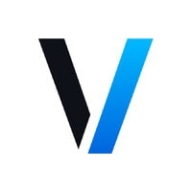

Find out what your peers are saying about SonarSource Sàrl, Veracode, Checkmarx and others in Application Security Tools.
| Product | Market Share (%) |
|---|---|
| Veracode | 6.1% |
| Qwiet AI | 0.7% |
| Other | 93.2% |
| Company Size | Count |
|---|---|
| Small Business | 70 |
| Midsize Enterprise | 44 |
| Large Enterprise | 113 |
Shipping secure code is painful and time-consuming – slowing down development teams and AppSec teams alike. ShiftLeft is on a mission to make vulnerabilities history. Our revolutionary Code Property Graph (CPG) enables us to seamlessly insert 10x faster code analysis, prioritized OSS vulnerability findings and real-time security education in one single SaaS platform integrated directly into modern development workflows. Combining our OWASP-benchmark dominating NG-SAST, Intelligent SCA, instant secrets detection, and contextual security education, ShiftLeft CORE code security platform turns every developer into an AppSec expert.
Veracode is a leading provider of application security solutions, offering tools to identify, mitigate, and prevent vulnerabilities across the software development lifecycle. Its cloud-based platform integrates security into DevOps workflows, helping organizations ensure that their code remains secure and compliant with industry standards.
Veracode supports multiple application security testing types, including static analysis (SAST), dynamic analysis (DAST), software composition analysis (SCA), and manual penetration testing. These tools are designed to help developers detect vulnerabilities early in development while maintaining speed in deployment. Veracode also emphasizes scalability, offering features for enterprises that manage a large number of applications across different teams. Its robust reporting and analytics capabilities allow organizations to continuously monitor their security posture and track progress toward remediation.
What are the key features of Veracode?
What benefits should users consider in Veracode reviews?
Veracode is widely adopted in industries like finance, healthcare, and government, where compliance and security are critical. It helps these organizations maintain strict security standards while enabling rapid development through its integration with Agile and DevOps methodologies.
Veracode helps businesses secure their applications efficiently, ensuring they can deliver safe and compliant software at scale.
We monitor all Application Security Tools reviews to prevent fraudulent reviews and keep review quality high. We do not post reviews by company employees or direct competitors. We validate each review for authenticity via cross-reference with LinkedIn, and personal follow-up with the reviewer when necessary.